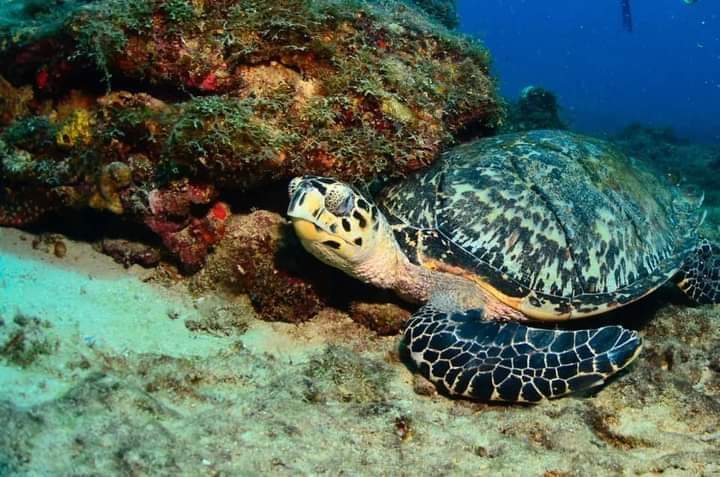
Nature Foundation Reminds Residents and Visitors to Take Care During Sea Turtle Nesting Season.
The Nature Foundation Sint Maarten encourages residents and visitors to protect adult sea turtles and their eggs by limiting lighting and disturbances along the shore, and reporting sea turtle activity to the Foundation. With the start of the annual sea turtle nesting season, three endangered sea turtle species are expected to lay their nests on many of Sint Maarten’s beaches from April until November and sometimes even as late as in December. The Nature Foundation is the designated authority to manage and research the sea turtle population and other protected species, appointed by the VROMI minister.
St. Maarten has permanent and nesting populations of green (Chelonia mydas), hawksbill (Eretmochelys imbricata) and leatherback (Dermochelys coriacea) sea turtles that have been reported to nest on the island. While sea turtles may nest on all beaches on St. Maarten, the beaches with the most reported nesting activity are Gibbs Bay, Simpson Bay, Mullet Bay, Guana Bay and Dawn beach.
Sea turtles often nest at night, laying up to 100-200 eggs, and sometimes return to do so multiple times over a period of a couple weeks. After approximately two months, the hatchlings will emerge and crawl to the ocean. However, all three sea turtle species are endangered species, and only about 1 in 1,000 hatchlings will survive to adulthood. For these reasons, precautions should be taken during the nesting season to ensure successful hatchings.
“Sea turtles play an important environmental and economic role for our island meanwhile; they face many threats to their survival due to pollution, overdevelopment of their nesting beaches, and direct human impact. It is essential that our visitors and residents take part in the role of protecting these creatures so that they continue to live in our waters and nest on our beaches,” explained Leslie Hickerson, Nature Foundation Educational Outreach Officer.
Sea turtles require a specific beach habitat to be able to nest. Lighting and activity on the beaches at night decrease nesting success because females avoid laying their eggs on bright, busy beaches. In addition, hatchlings become disoriented and travel towards artificial lights instead of the reflecting moonlight on the ocean. The Nature Foundation recommends that beachfront homes and businesses place a cap on lights or replace conventional lights with red lights to avoid these issues.
Further, if you encounter a sea turtle, nest, or hatchlings, it is recommended to remain at least 15 meters away since it is prohibited to disturb, harm, or kill sea turtles. Do not allow your dogs to dig around the nest, and never operate vehicles on the beach sand. This could damage sea turtle nests and minimizing nesting success. Last year, six sea turtles were also reported injured or killed due to boat strikes. Boat captains should drive responsibly in the lagoon and bay areas, traveling at no faster than 5 knots to avoid collisions and keep watch at all times.
The Nature Foundation is currently collecting nesting data to compare it to previous surveys. This research allows us to evaluate the nesting seasons’ historical success and determine human activity’s impact over the years. Individuals can participate by volunteering to patrol beaches late at night or early in the morning. Please contact us if you find sea turtle tracks or an apparent nest. The Nature Foundation also encourages St. Maarten residents to spread awareness by checking in weekly to “Turtle Thursdays,” a series of educational programming posted on our social media accounts for all ages.
News Release
